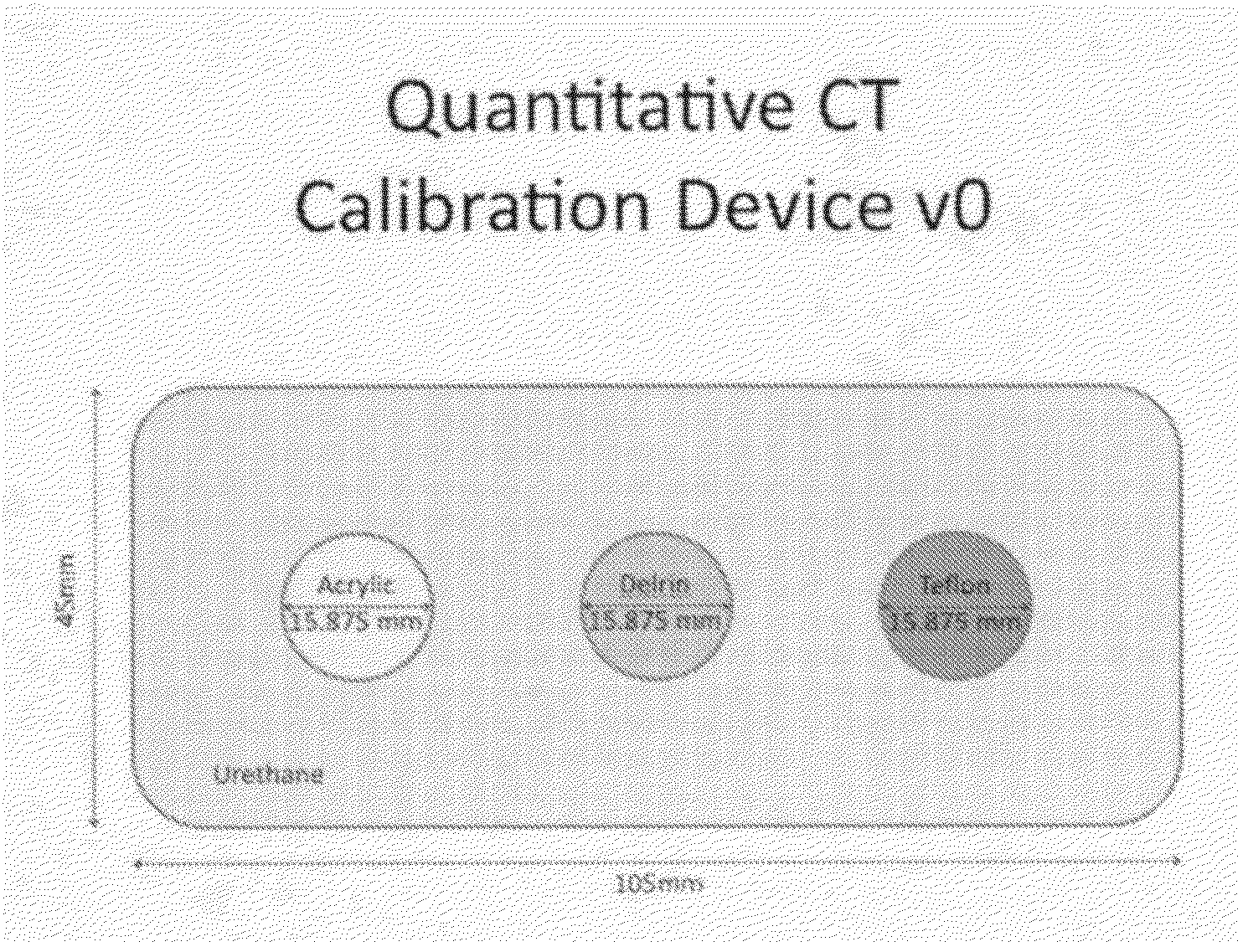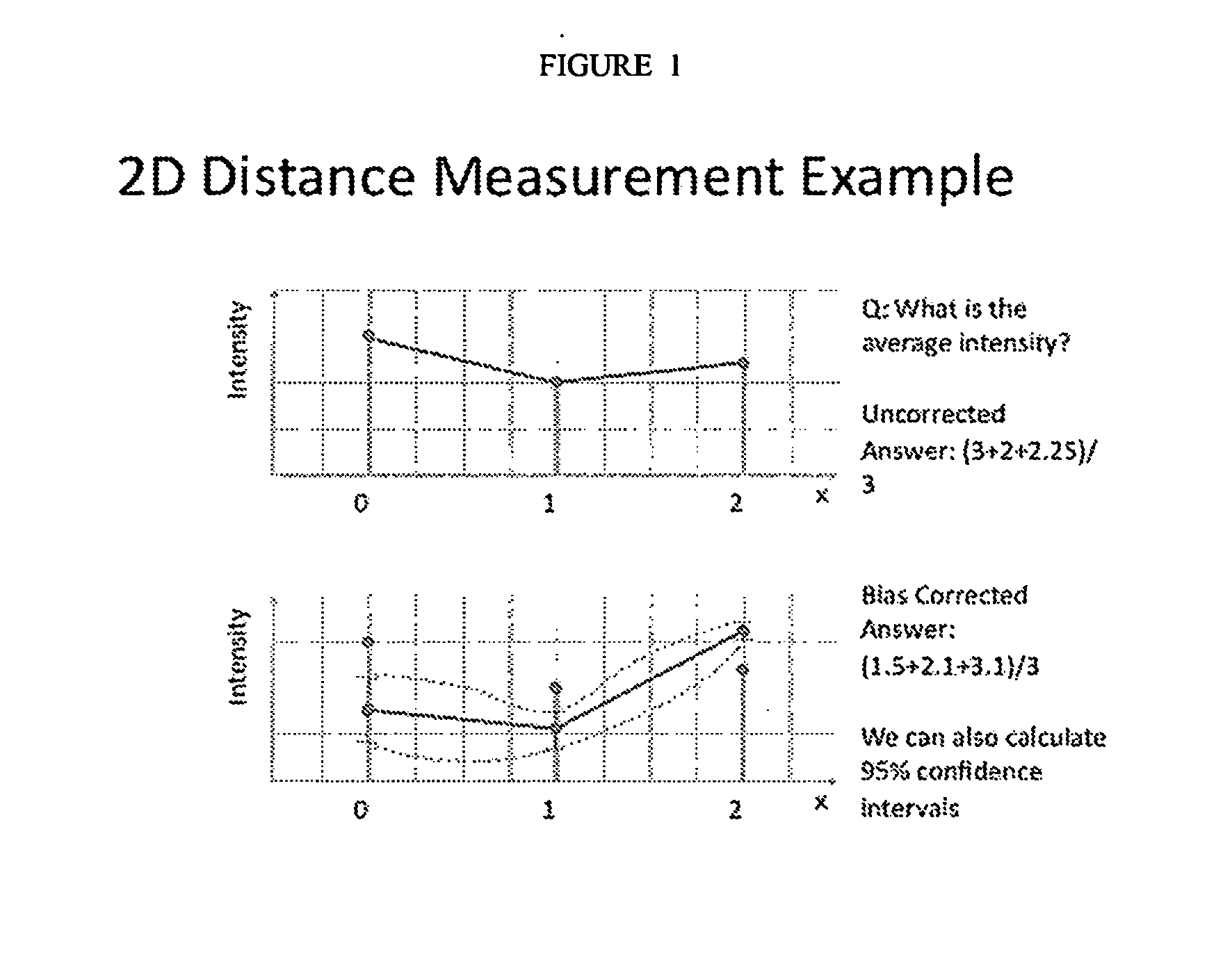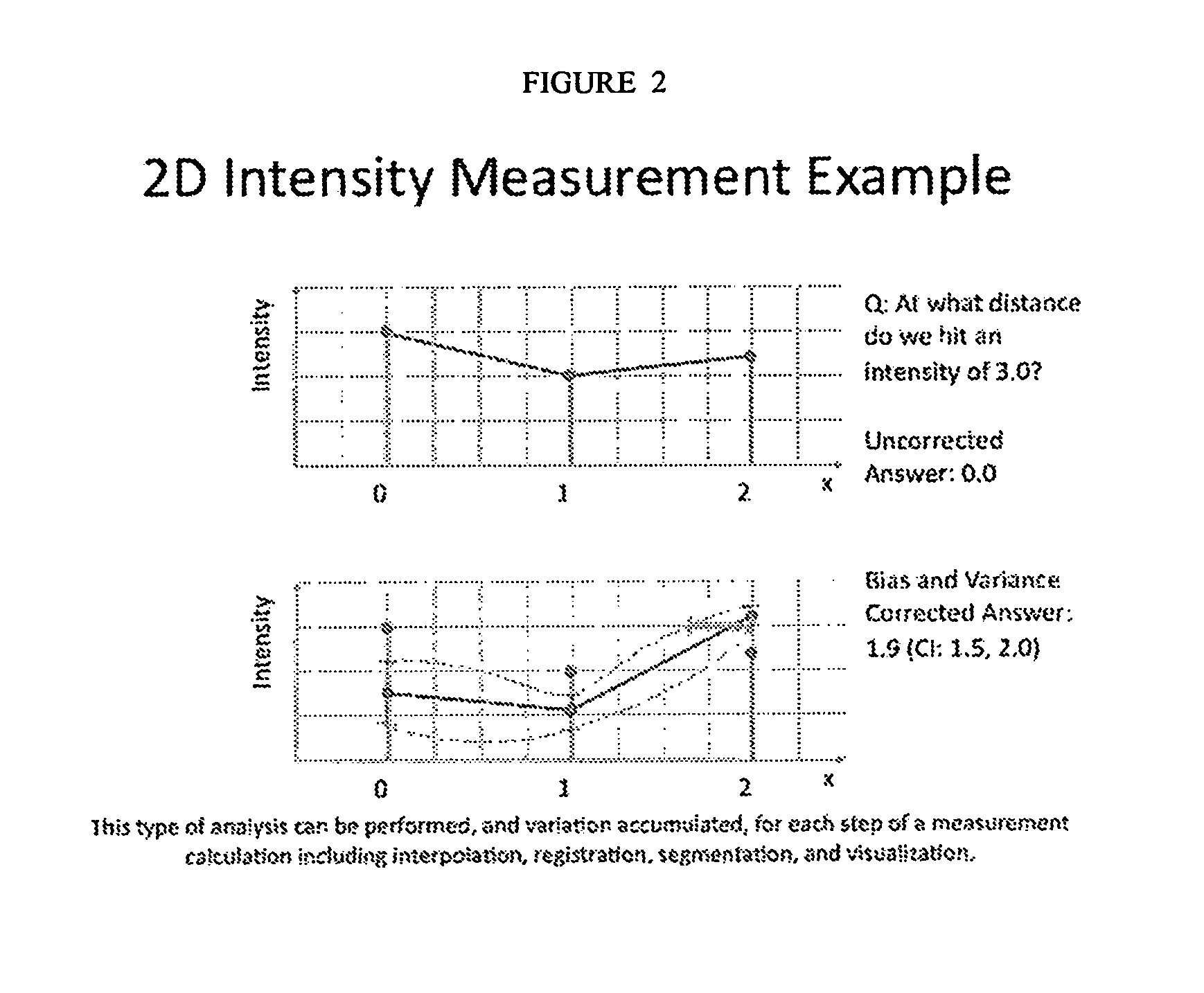Calibration Phantom Device and Analysis Methods
a technology of which is applied in the field of calibration phantom device and analysis method, can solve the problems of inability to transmit the performance of the acquisition device, significant amount of manual labor in the process, and inability to perform calibration
- Summary
- Abstract
- Description
- Claims
- Application Information
AI Technical Summary
Benefits of technology
Problems solved by technology
Method used
Image
Examples
Embodiment Construction
[0051]One aspect of the present invention is directed to a virtual model that optimizes the scanned information received from a radiologic device such as a CT scanner by taking into account the variations that occur during scanning whereby the scanner reports different values at different distances from the center of a scan. Such a model comprises a set of values stored within a database and which can be used to correct or optimize the actual values generated during a radiologic scan such as a CT scan.
[0052]In another aspect, the database is updated with each new scan performed.
[0053]In another aspect, the database is created by scanning a pocket phantom, or small scannable device, that provides resolution and other information about the performance of the scanner being used.
[0054]In another aspect, the scannable device or phantom may have detectable indicia, such as a serial number. In another aspect, the phantom has a moving part integrated in it that, when moving at a constant ro...
PUM
 Login to View More
Login to View More Abstract
Description
Claims
Application Information
 Login to View More
Login to View More - R&D
- Intellectual Property
- Life Sciences
- Materials
- Tech Scout
- Unparalleled Data Quality
- Higher Quality Content
- 60% Fewer Hallucinations
Browse by: Latest US Patents, China's latest patents, Technical Efficacy Thesaurus, Application Domain, Technology Topic, Popular Technical Reports.
© 2025 PatSnap. All rights reserved.Legal|Privacy policy|Modern Slavery Act Transparency Statement|Sitemap|About US| Contact US: help@patsnap.com



